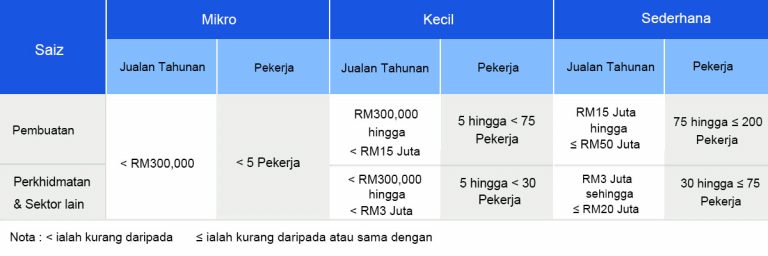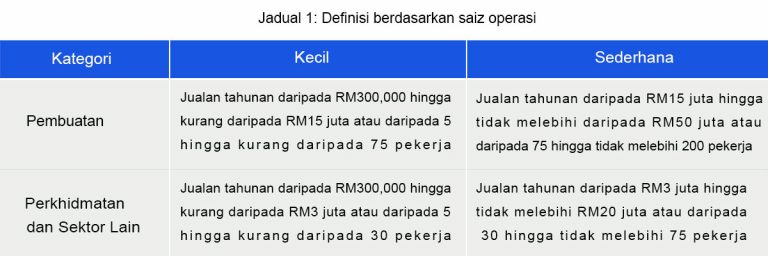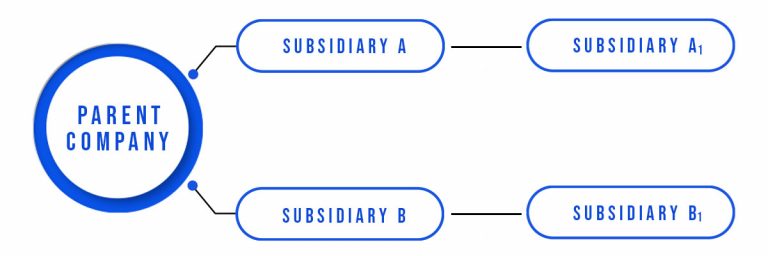Definisi PKS
Memandangkan terdapat banyak perkembangan dalam ekonomi sejak tahun 2005 seperti inflasi harga, perubahan struktur dan perubahan trend dalam perniagaan, semakan definisi telah dilaksanakan pada tahun 2013 dan definisi PKS telah disahkan dalam Mesyuarat NSDC ke-14 pada bulan Julai 2013.
Definisi tersebut dipermudahkan seperti berikut:
-
- Pembuatan: Jualan tahunan tidak melebihi RM50 juta ATAU pekerja sepenuh masa tidak melebihi 200 orang.
- Perkhidmatan dan sektor lain: Jualan tahunan tidak melebihi RM20 juta ATAU pekerja sepenuh masa tidak melebihi 75 orang.
Sesuatu perniagaan itu boleh ditakrifkan sebagai PKS sekiranya ianya memenuhi salah satu kriteria yang telah dinyatakan, iaitu jumlah jualan tahunan atau pekerja sepenuh masa, yang mana lebih rendah.





